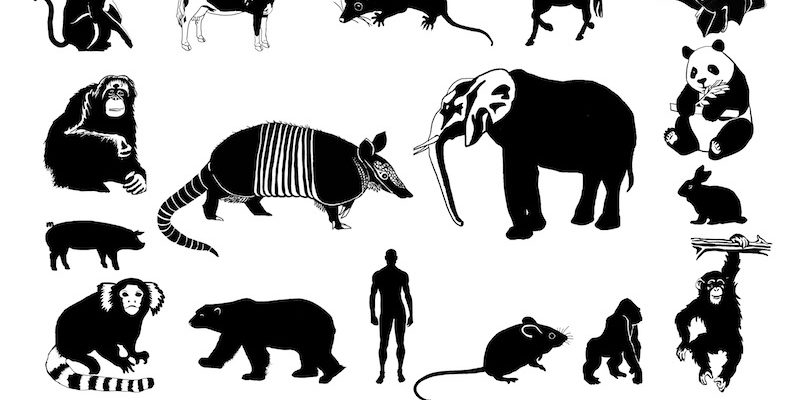[dropcap style=”normal or inverse or boxed”]H[/dropcap]ow are mammals related to one another ? This question has puzzled biologists for decades. In our most recent publication we describe how, using sequence data and sophisticated phylogenetic models, we have resolved this issue. Our analysis shows that the root of the placental mammal phylogeny is the common ancestor of the xenarthra (e.g. armadillo) and the Afrotheria (e.g. elephant) lineages. This root position is known in the literature as the Atlantogenata position. If you are interested in reading more about what data and models we used to come to this conclusion please access our paper (open access) here.
Abstract: Heterogeneity among life traits in mammals has resulted in considerable phylogenetic conflict, particularly concerning the position of the placental root. Layered upon this are gene- and lineage-specific variation in amino acid substitution rates and compositional biases. Life trait variations that may impact upon mutational rates are longevity, metabolic rate, body size and germ line generation time. Over the past 12 years, three main conflicting hypotheses have emerged for the placement of the placental root. These hypotheses place: the Atlantogenata (common ancestor of Xenarthra plus Afrotheria), the Afrotheria, or the Xenarthra as the sister group to all other placental mammals. Model adequacy is critical for accurate tree reconstruction and by failing to account for these compositional and character exchange heterogeneities across the tree and dataset, previous studies have not provided a strongly supported hypothesis for the placental root. For the first time, models that accommodate both tree and dataset heterogeneity have been applied to mammal data. Here we show the impact of accurate model assignment and the importance of datasets in accommodating model parameters while maintaining the power to reject competing hypotheses. Through these sophisticated methods, we demonstrate the importance of model adequacy, dataset power and provide strong support for the Atlantogenata over other competing hypotheses for the position of the placental root.



